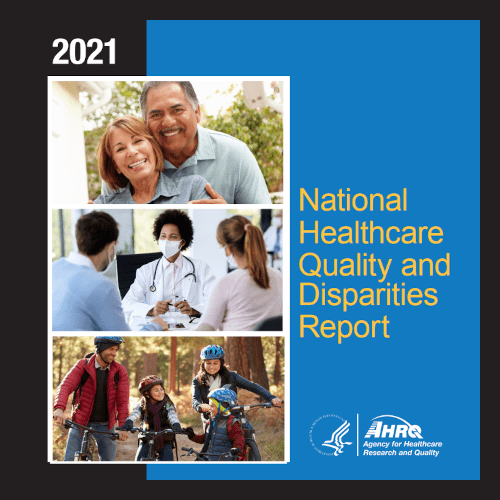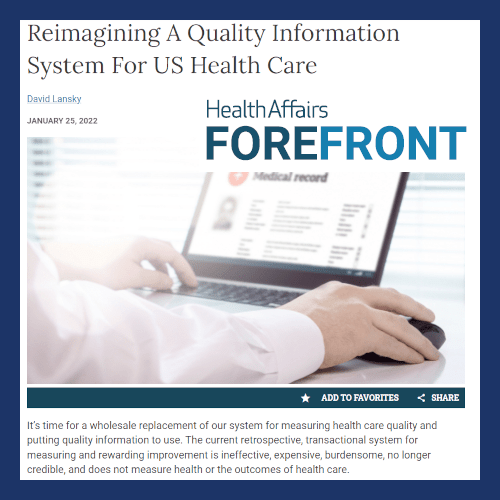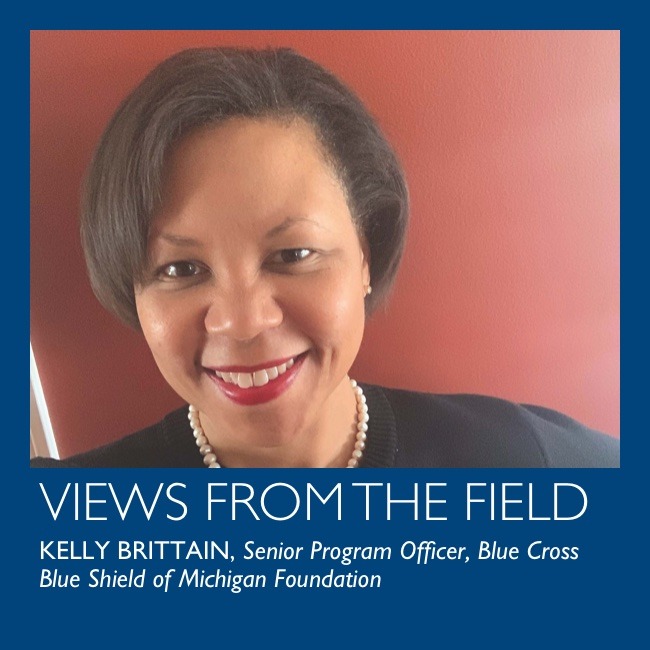AHRQ Releases Annual Update on U.S. Healthcare Quality, Disparities
The Agency for Healthcare Research and Quality has released its National Healthcare Quality and Disparities Report, which details the state of healthcare quality and disparities in the United States. The report identifies improvements in HIV and colon cancer care, nursing home care, and medication prescribing to older adults. The report also indicates that more work needs to be done to address disparities in important areas. Among the findings, dental and oral health care services have not substantially improved, particularly for people with low income or who live in rural areas.
Reimagining A Quality Information System For US Health Care
Recommendations include: a national data infrastructure that operates independent of practice setting; aligned multipayer incentives that support needed infrastructure investments; longitudinal patient-reported outcome measures captured both in-clinic and through mobile technologies; a series of robust regional demonstration projects to broaden stakeholder understanding and technical capability; and a governance mechanism that assures both simplification and alignment of methods.
How does cost affect access to care?
In this chart collection, authors from the Peterson-Kaiser Family Foundation Health System Tracker explore trends in how costs affect access to care in the U.S. based on the National Health Interview Survey data through 2020. Health spending per person in the U.S. averaged almost $12,000 in 2020, nearly double the average in other large high-income countries.
The Power of Partnerships in Improving Health Care Access and Outcomes
Partnerships are essential to improving health care access, and outcomes, and forming partnerships require listening, learning, transparency, and flexibility.
Legislative Opportunities to Increase Health Care Access and Coverage
This webinar discussed the key features of the American Rescue Plan Act and the Build Back Better framework—which include extending marketplace subsidies, addressing the Medicaid coverage gap, providing funding for clinics and health centers, supporting consumer assistance and enforcement, funding reinsurance and affordability programs—and discussed philanthropy’s opportunity to engage in the resulting work in communities across the country.
Standing Together: Philanthropy’s COVID-19 Relief Funds and Immigrant Communities
This webinar featured a dive into the findings and a discussion on how foundations can prepare for future relief efforts.
Preparing for the End of the Public Health Emergency: State Strategies for Coverage Retention
This webinar explored the key issues that states will face at the end of the PHE and strategies that are being designed to ensure families no longer eligible for Medicaid will not go uninsured.




